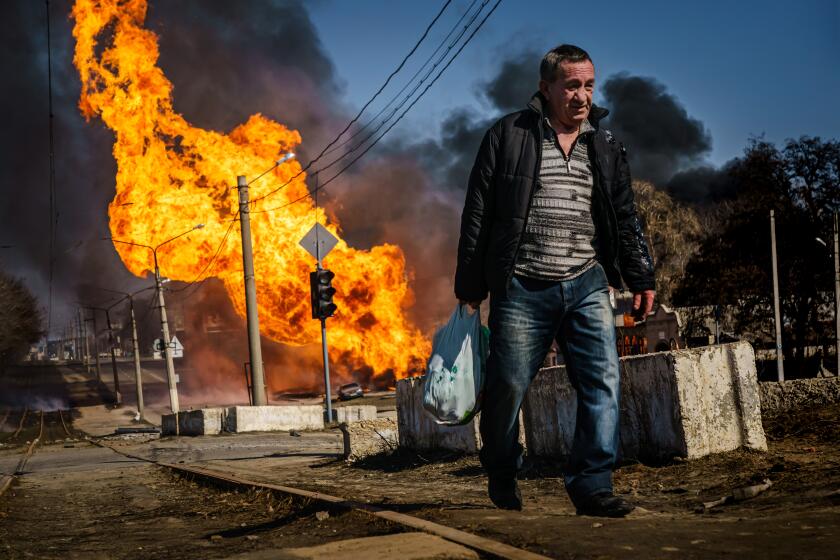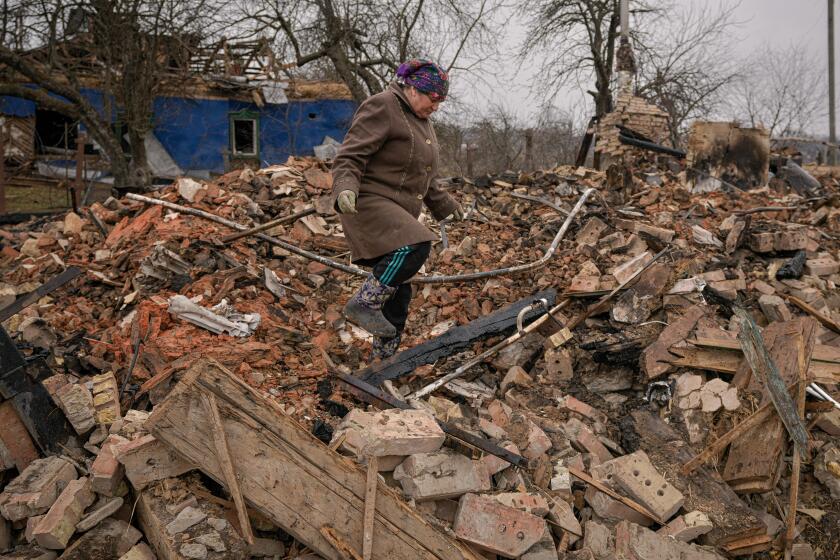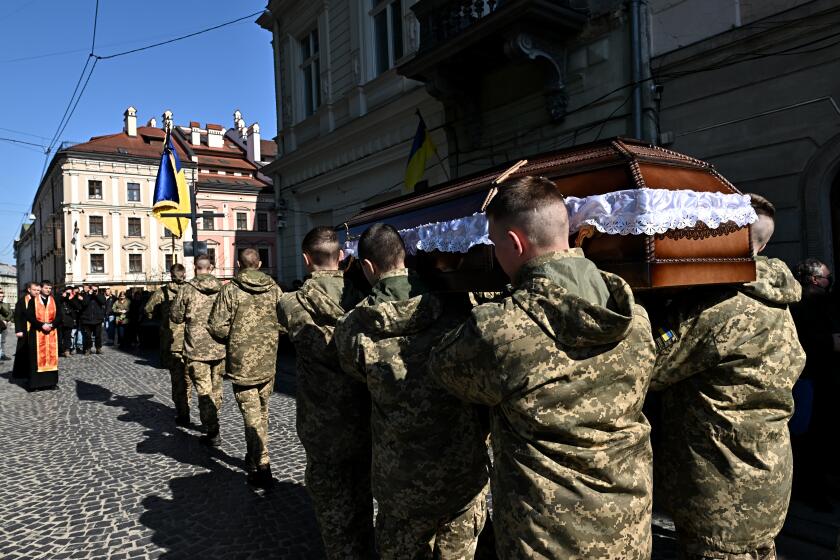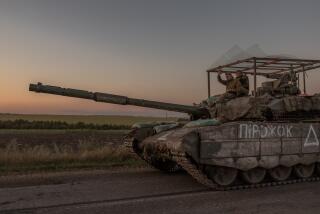U.S. military veterans answer Zelensky’s call to fight, but not all are chosen
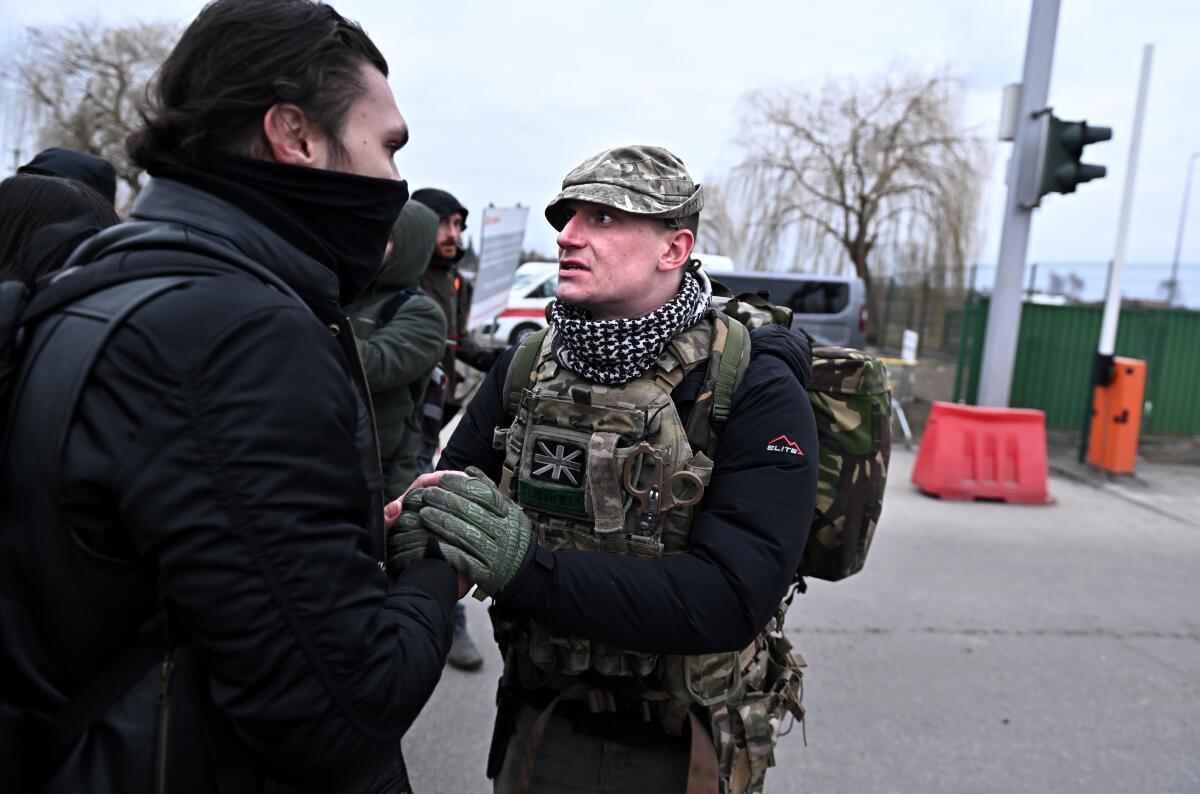
- Share via
LVIV, Ukraine — First he missed his flight. Then his gear got lost somewhere between Little Rock and Warsaw. Finally, after traveling thousands of miles to help Ukraine fight the Russian military, the country’s foreign legion rejected him.
Cody Heard, a 29-year-old U.S. Army veteran from Arkansas, was undeterred. He and three other young volunteers — a Brit and two Dutchmen — were headed to the Ukrainian capital the next day to try to hook up with a military reserve unit.
“They will take us — I hope,” said Heard, hanging outside a hostel in Lviv with his three comrades, all bedraggled after days on the move, their packs lying on the ground. “I mean, I messaged them. But I haven’t heard back yet.”
Heard is among hundreds or possibly thousands of foreign nationals who have swooped into Ukraine in recent weeks to join the battle against the Russians. Some are ex-soldiers. Many are not.
They come from the United States, Europe, Asia and across the globe. With their military packs, bundles of gear and self-assured struts, they are conspicuous crossing the border from Medyka, Poland, into Shehyni, Ukraine, and hanging out on the streets and in the cafes of Lviv, 40 miles east of the Polish frontier.
As Ukrainian refugees continue to flow westward, the would-be fighters stream in the opposite direction.
The Times’ Marcus Yam, no stranger to war photography, gives a first-person account from Ukraine.
After Russia’s Feb. 24 invasion, it was Ukrainian President Volodymyr Zelensky who opened the doors. He invited foreigners to join the new “International Defense Legion of Ukraine,” a force whose grandiose title recalled the venerable International Brigades that fought for Republican Spain in its doomed bid against fascist forces in the 1930s.
The Ukrainian incarnation got off to a difficult start, to say the least.
In the predawn hours of March 13, a volley of Russian cruise missiles struck a military base about 30 miles from Lviv that was a training hub for both Ukrainian troops and foreign volunteers. Authorities say more than 40 Ukrainians were killed.
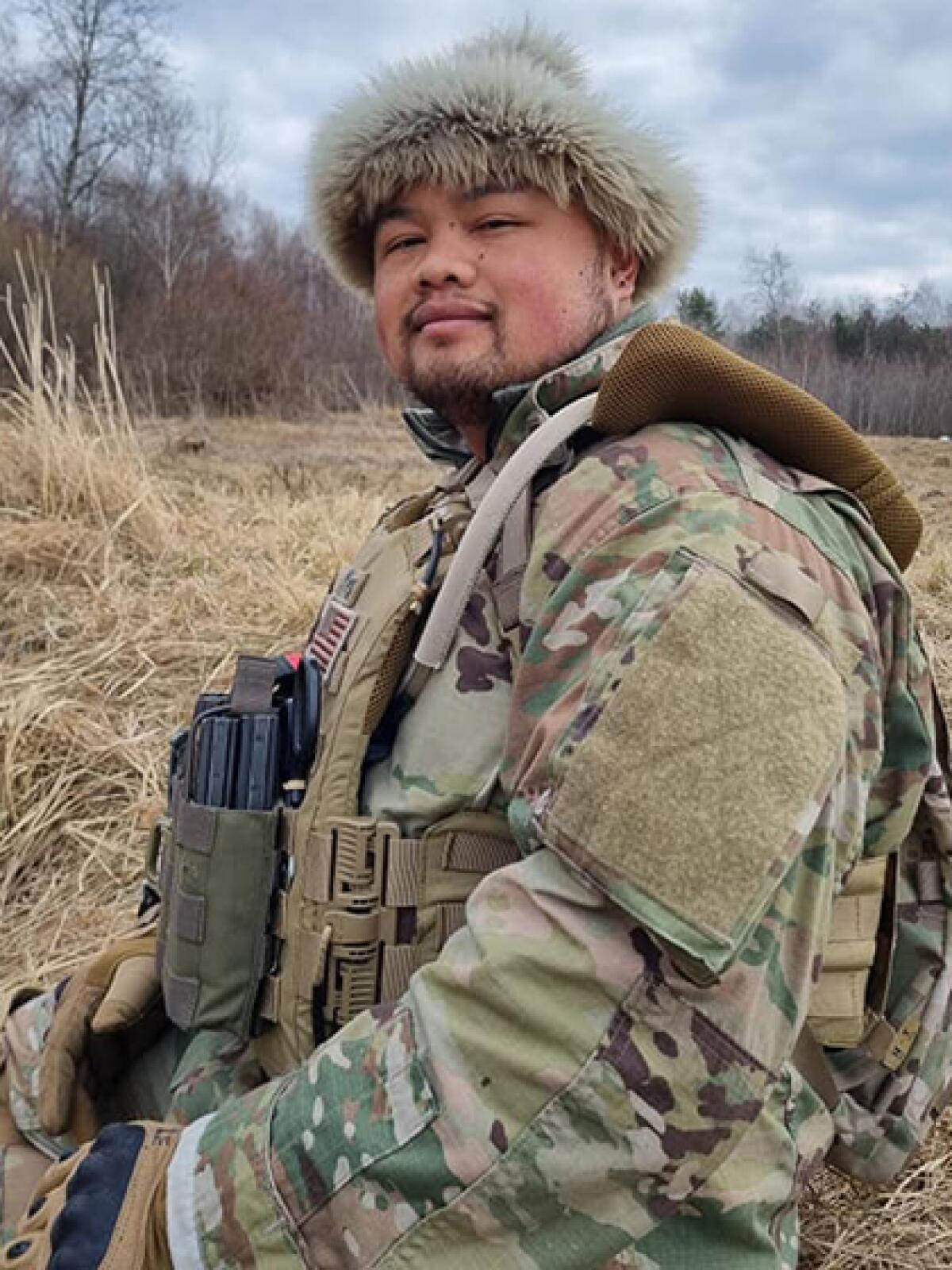
No foreign recruits were reported lost, but several survivors posted graphic video of the destruction and said they barely escaped.
“I ran out and saw a pillar of fire — I couldn’t believe it,” recalled Hieu Le, 30, a volunteer and former U.S. Army soldier in Afghanistan. “It was a madhouse.”
Fearing Russian paratroopers were going to drop in, the volunteers took up defensive positions in the adjacent forests.
Shaken by the experience, many at the base left the country, according to volunteers and various social media accounts. Le spoke by telephone from Croatia, where he was unwinding after his ordeal.
Foreign fighters here have complained of a lack of proper weapons, body armor and other supplies, along with a faulty command structure and shoddy discipline.
Some say they were dispatched to the front unprepared for the intensity of battle.
Strikes in key Ukrainian cities fuel skepticism of Moscow’s pullback plan. Aides are ‘afraid’ to tell Putin the truth about the invasion, U.S. says.
“The general attitude among legionnaires was low morale and a feeling that the Ukrainians were just using us as cannon fodder,” said Le, who fought in the bloody battle for Irpin, north of the capital, Kyiv.
“Understandably, the Ukrainians have a lot on their hands. They don’t want to put too much effort into this force.”
The Ukrainian military did not respond to requests for comment and has not said how many foreigners have enlisted, how many have left, how many have been wounded or how many have been killed.
The government of Georgia, the former Soviet republic, has said that three of its citizens — part of a separate Georgian legion — have been killed in Ukraine fighting Russia.
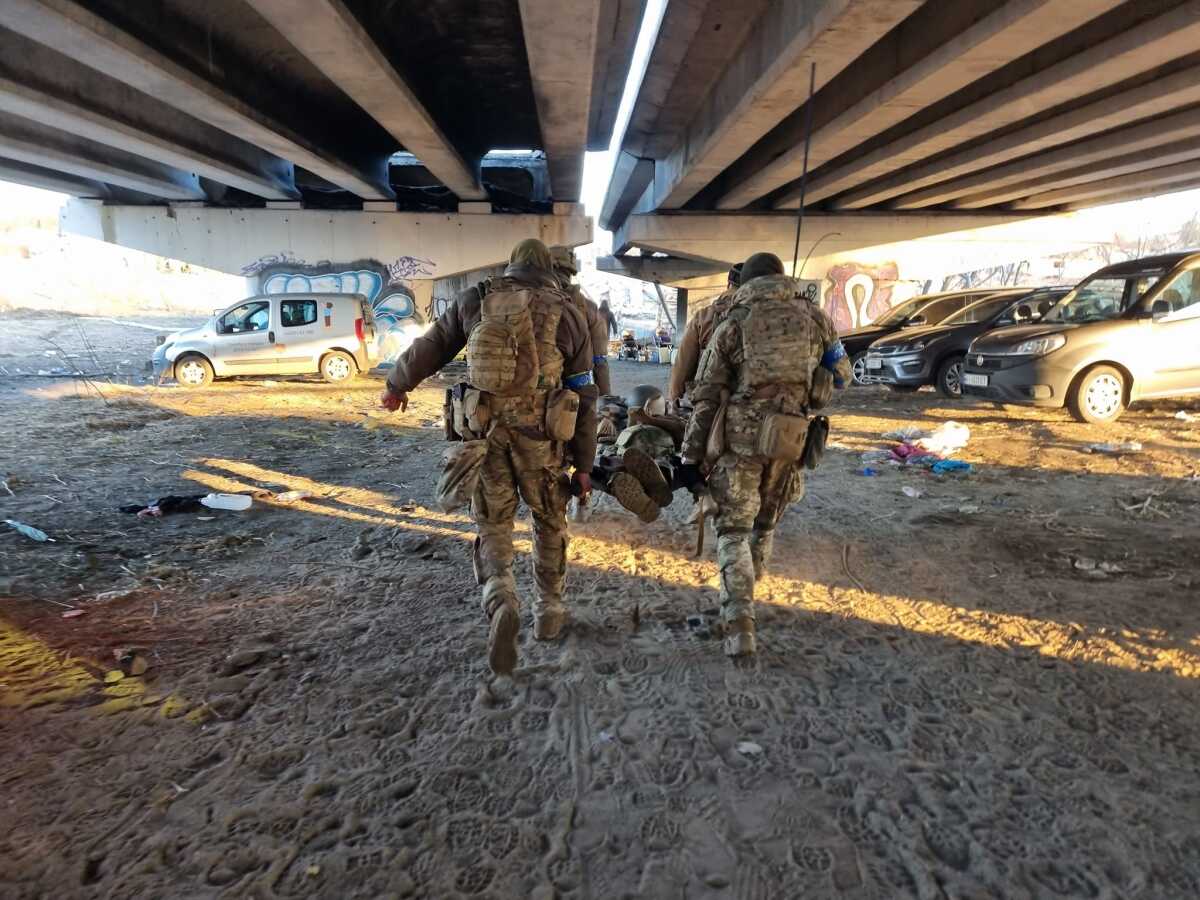
From the outset, volunteers said, the recruitment drive was disorganized.
Ukrainian embassies across the globe were supposed to be the initial point of contact. But many would-be fighters found embassies unresponsive, or simply decided to come to Ukraine without checking in. Volunteers pooled information in online chat rooms and on other social media sites directing them to Poland and across the border to Ukraine — a country that few had contemplated much before the invasion.
“The embassy website in Oslo was down when I tried — I heard it was a cyberattack,” said a 26-year-old Norwegian volunteer who declined to give his name, citing concerns about his security.
Turning to a Facebook group for guidance, he flew to Warsaw but could find no one to direct him to the border and boarded a train going the wrong way. He finally made it to the Ukrainian border, but was unable to find lodging in a zone overflowing with refugees and slept out in the cold for a night. Finally, he walked to the Ukraine side.
Breaking News
Get breaking news, investigations, analysis and more signature journalism from the Los Angeles Times in your inbox.
You may occasionally receive promotional content from the Los Angeles Times.
“I feel I’m sharp now, ready to go,” said the Norwegian, who had one year of military service at home, adding: “From what I understand, I’ll get some training and be ready to fight.”
The ranks of volunteers also include medics, search-and-rescue experts and others offering specialized skills.
All express outrage at what they call Russian abuses and a deep admiration for the Ukrainian resistance.
“When I started seeing civilians getting hurt, little kids — the same ages as my kids — I was like, ‘This isn’t right,’” said Heard, a father of two, ages 4 and 12.
A warehouse worker at Amazon in Arkansas, he said he left the Army in 2020 after eight years of service without any deployments overseas.
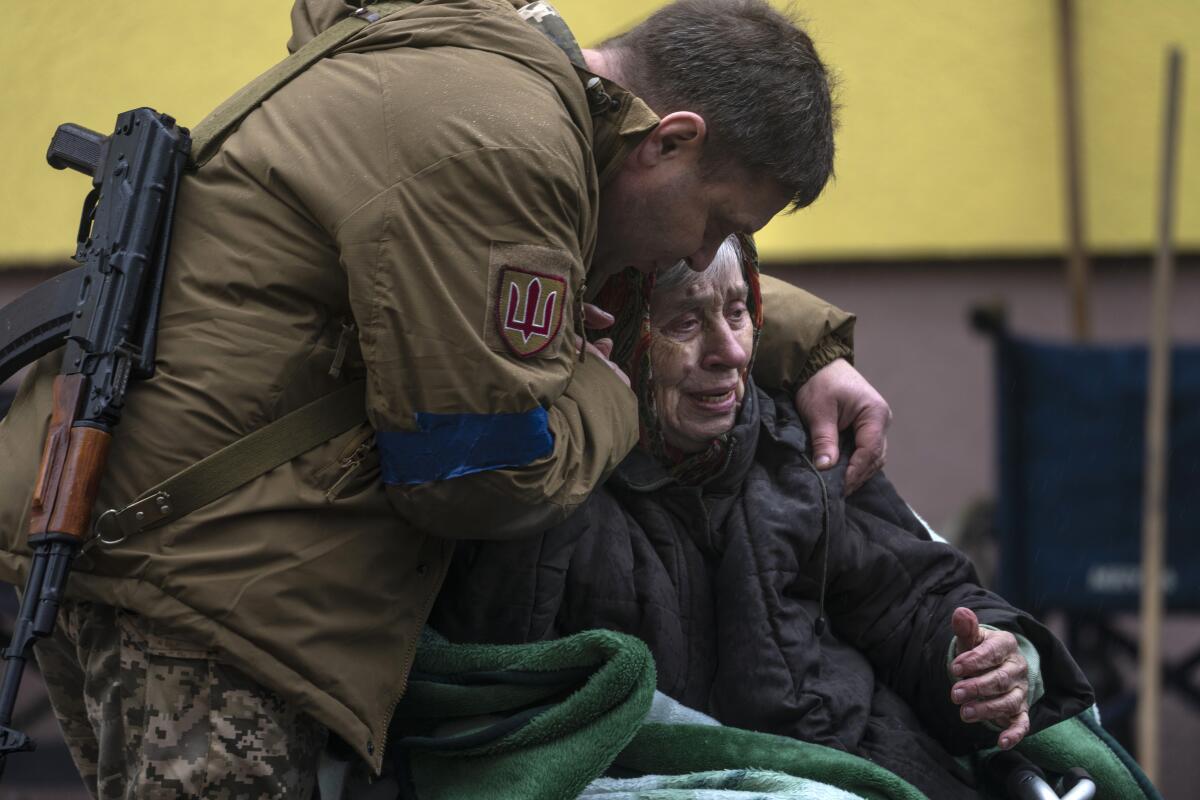
Many of those arriving have no relevant skills — just a profound desire to help Ukraine.
“If they have room for one more, I’m here, and I’m ready to sign up and go,” said Jeffrey Trautmann, 50, a retired chemistry professor from the Chicago area who was waiting on a recent afternoon outside the foreign legion “welcome” tent on the Ukrainian side of the border with Poland.
“I would fight for Ukraine. I would. These are good people.”
His lack of military experience will probably be an issue for Ukrainian officers, who do initial vetting at the border post. Some volunteers are rejected outright. Others are sent for up to four weeks of training. Those deemed battle-ready are quickly incorporated into fighting units, volunteers said.
Many have encountered logistical and financial hurdles coming here. In Heard’s case, his luggage was lost on flights between Little Rock and Warsaw, including his body armor, helmet and other gear, all worth more than $1,000.
He said the legion turned him down at the border because he refused to sign a contract that would have bound him until the conflict ended.
“I told them, ‘I’m not signing a contract,’” he said “‘I’m here to help you guys. I can give you a month. But I have a job and family to get back to. I have a life.’”
He and his three comrades were hoping for better luck once they got to Kyiv.
L.A. Times foreign correspondent Patrick J. McDonnell has made his way from Poland to Ukraine. He shares some of his stories.
At least one foreign fighter has become something of an online celebrity.
James Vasquez, a 47-year-old home building contractor and Army veteran from Connecticut, has been drawing millions of views on Twitter by posting videos from undisclosed front lines.
On March 24, he tweeted that his unit had destroyed seven Russian tanks and liberated a village that had been occupied for a month by Russians who “terrorized the people and took their food.”
“It’s been a long day, baby,” he wrote.
Vasquez said the attention has helped raise almost $50,000 to purchase Kevlar helmets, rifle parts, uniforms and other much-needed equipment.
On March 17, when he still was at the Polish border, Vasquez tweeted that some volunteers were being barred entry to Ukraine “because of a couple of incidents where foreign soldiers turned on Ukraine soldiers.”
But Vasquez said his U.S. passport was well-received at checkpoints.
“They let me right through because they think it’s awesome an American soldier is here to fight along side them,” he wrote.
More to Read
Sign up for Essential California
The most important California stories and recommendations in your inbox every morning.
You may occasionally receive promotional content from the Los Angeles Times.
